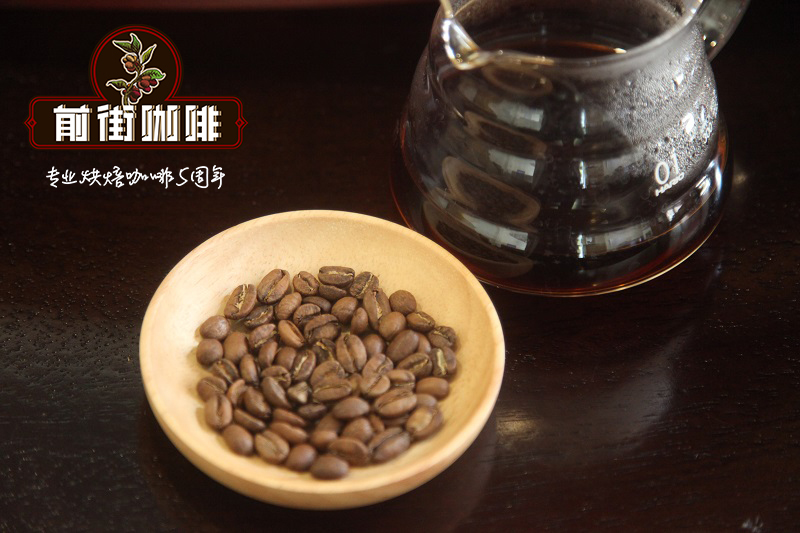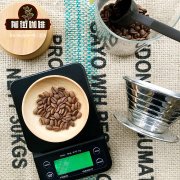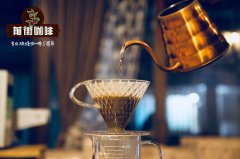What are the characteristics of microbatches? What are its characteristics?
Professional coffee knowledge exchange more coffee bean information please follow the coffee workshop (Wechat official account cafe_style)

This coffee micro-batch coffee comes from a specific area of an estate, sometimes from a small farm, or from a small plot of land shared by many producers.
Coffee is harvested and processed in small batches, and micro-batches of coffee are usually of very good quality because of higher labor costs, which in turn increases the back-end price. Terra said O'coffee 's micro-batch coffee had a cup score of about 87-89 points and produced about 40 packets of 60-kilogram sacks.
Behind this micro-batch coffee is coffee grown on smaller, more specific and more precisely controlled land, which is divided into four main assessment areas:
Traceability
No one will want to drink coffee from an unknown source, and the more details of the origin can be described, the more you will know about the coffee. The certification of this coffee is also important, so you can also know that this cup of coffee is environmentally sustainable or farmer-friendly.
Smaller batches of coffee are more traceable, and you can know where coffee is grown, under what conditions, and even its impact on the local environment. You start to have a little connection with coffee growers, and even ideally, buyers can work with farmers to create sustainability.
Uniqueness
Each planting and processing process will form a unique flavor of coffee (good or bad). Some coffee really have very unique flavor characteristics, some may be full of floral flavor, some may be sweeter.
If such coffee is combined into formula beans, these flavor characteristics may be masked. On the contrary, if such coffee is presented as a single product, it can reflect its unique flavor and the characteristics of batch processing.
It is important to keep historical data, and it is important to know clearly where the coffee comes from and that there is no coffee mixed with it from other farms.
Producers must work hard in the processing process to do so, especially in micro or nano batches. Tracking information and the location of coffee is key, as are organized gardens and processing plants. Coffee needs to be harvested, processed and stored separately. All information, such as batch name, batch number, variety, handling, etc., needs to be properly controlled and preserved.
The so-called micro-treatment is actually a small amount of coffee berries handled by coffee farmers themselves. Since 2000, Costa Rican farmers have bought dry washing systems, a set of about $25000 to $30, 000, which is a large investment.
As a result, each producing area began to have its own unique flavor of manor coffee beans, and participate in well-known coffee competitions (such as: COE), so that more international third wave of boutique coffee buyers can access the raw beans of these estates. Among them, the Treasure Manor is appreciated by Blue bottle Coffee, which is the best example!
Because of the serious water pollution problem in Costa Rica, most of them are treated by mechanical washing, but the treasure manor only specializes in honey treatment, and it is still black honey treatment, retaining all the sticky pulp layer, which is a high degree of honey treatment!
Important Notice :
前街咖啡 FrontStreet Coffee has moved to new addredd:
FrontStreet Coffee Address: 315,Donghua East Road,GuangZhou
Tel:020 38364473
- Prev

How is the quality of coffee in Taiwan? What are the characteristics of coffee?
Professional coffee knowledge exchange more coffee bean information please follow the coffee workshop (Wechat official account cafe_style) Alishan Mazu Taiwan coffee beans are strictly grown in the Alishan mountain coffee beans at an altitude of 800m to 1300 meters, belonging to Arabica beans. Mafeel is a language taken from the Zou people of the Alpine nationality in Alishan, which means delicious and delicious. Maf
- Next

Hand-brewed coffee filter cup recommended what is the choice of hand-made coffee filter cup?
Professional coffee knowledge exchange more coffee bean information Please follow the coffee workshop (Wechat official account cafe_style) in the Japanese magazine coffee filter cup flow rate, which is a very interesting result, usually when making coffee by hand, it seems that this point is not discussed. Then let's take a look at the one above.
Related
- Is espresso stored overnight in the refrigerator harmful to your body? Is frozen coffee better than freshly ground coffee?
- What parameters and proportions of water temperature should be used to grind and brew fresh coffee beans? Why can't I drink freshly roasted coffee right away?
- Customers have "changed" Manner's new products! Shop assistant: Please don't mess around!
- Remove sockets in customer areas at Starbucks stores?! Netizen: I won't go if I really tear it down
- What is the difference between the taste steps of sun-dried coffee and washed coffee? Why is sun-cured coffee sweeter and washed coffee sour?
- The recipe for salty grapefruit dirty is revealed! Coffee Festival salty grapefruit dirty coffee making materials parameters ratio milk share!
- How about the flavor of Sunlight 74158 at Sidamo Banshaha Mathieu Processing Factory in Ethiopia? 74158 Share the proportion of coffee brewing parameters!
- What effect does Italian American coffee with filter paper have? Will coffee taste better if it is put on filter paper at the bottom of the powder bowl?
- What is the color difference in coffee beans? What are the characteristics of honey processed coffee beans? Why are the anaerobically treated coffee beans uneven in color?
- How does novice Xiaobai quickly get started and make coffee? Newbies learn to make coffee by hand and share the specific steps and process process!

